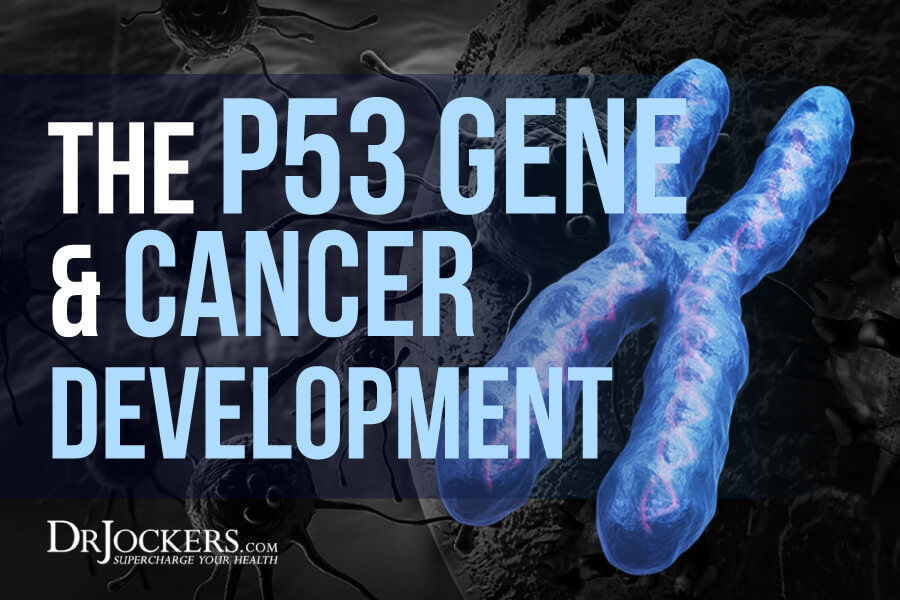
Do Your Genetics Control Your Health?
The p53 gene is a unique gene that scientists are continuing to investigate for its role in the development of cancer and other chronic diseases. For years our parents and grandparents were told that their health outcomes were based around the genetic characteristics they inherited from their parents. While genetics do play an important role in our physiology, the broad-based perspective that medical science perpetuated was that genetic material is the most important factor in our health outcomes.
Today, we understand that many aspects of our genetics are controlled by the environmental factors that we interact with on a daily basis. This is called epigenetics, or genetic adaptation through environmental stimuli (1). Epigenetics is a field of genetics, in which variations are caused by environmental stimuli that switch genes on and off and affect how the cells read specific genes (2).
Let’s take a closer look at the difference between genetic and epigenetic expression when it comes to our health.
Genetic Polymorphism: This is a change in the DNA sequence in a particular genotype. An example would be Down’s Syndrome which has a triple chromosome at 21. This third chromosome (we should only have 2) leads to growth abnormalities and mental retardation. This is a process that happens during the congenital period of development in the mother’s womb.
Epigenetic Adaptation: This is a change in the genetic expression without any sort of modification in the DNA sequence. Certain genes are switched on and off based on the environmental stimuli that are acting upon them (2). These adaptations happen after birth as the individual is exposed to various environmental inputs and their genes adapt to these experiences.

Genetic and Epigenetic Expression
While the particular eye color and skin color you have are based on the DNA sequencing in your cells, the development of chronic disease is a result of epigenetics or how the environment you have been exposed to has altered your genetic expression (3).
This is good news because if we can alter our genetic expression for the worse by lifestyle and environment, it also means we can improve our genetic expression through positive lifestyle habits. Reducing stress, eating good foods, avoiding toxins, going through periodic cleanses, having positive relationships, and getting adequate rest all help to protect our genetic stability and reduce the risk of developing chronic disease.
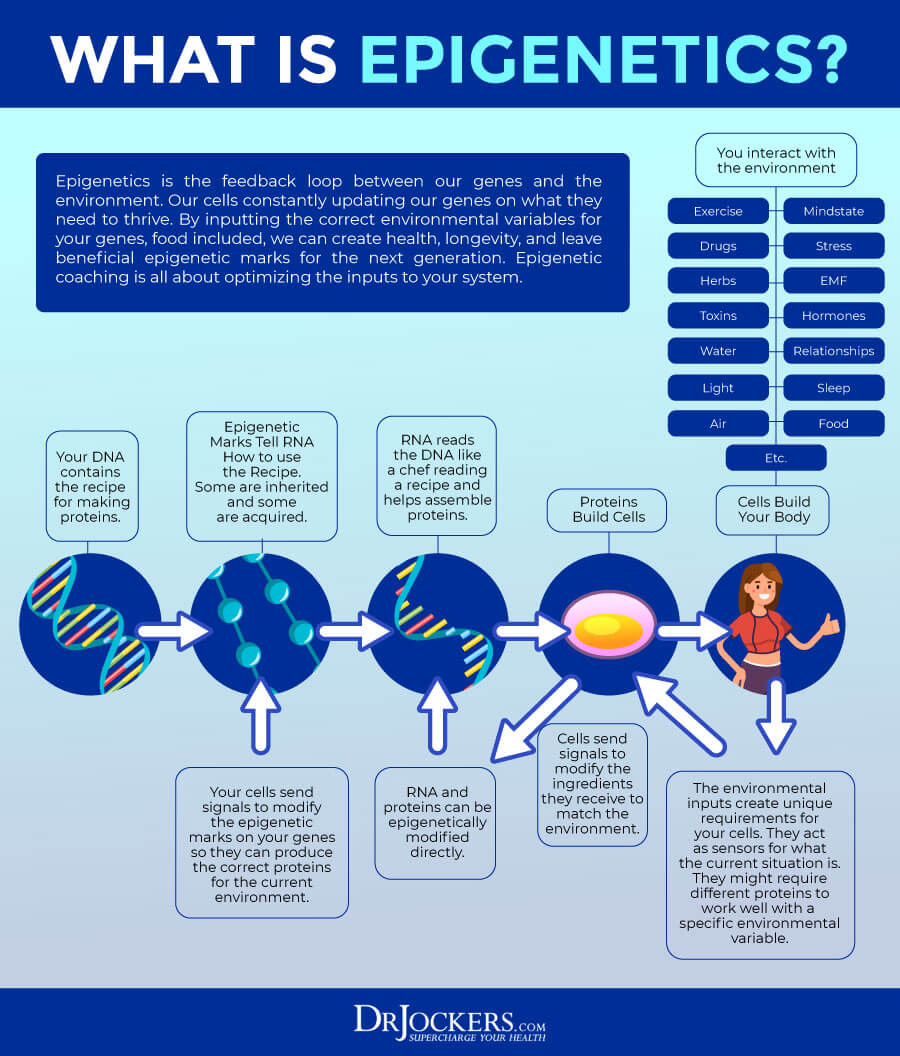
The p53 Gene and Cancer Development
One genetic protein that scientists are studying in detail for its role in cancer cell development is the p53 gene. P53 acts as a guardian of the DNA by acting as a checkpoint in the cell cycle process (4). When it senses abnormalities in the growth cycle, it activates the p21 gene which binds to the cell division-stimulating protein (cdk2) to stop the cell cycle.
While the normal cell cycle is stopped, the cellular enzymes initiate a DNA repair process. If the DNA is able to be repaired, the p53 gene will allow the cell to go back into its normal cycle of growth and reproduction. If the DNA cannot be repaired, then p53 signals for cellular apoptosis (programmed cell death) (5).
In a sense, p53 acts as a security guard to make sure that abnormal cellular growth does not occur. Its job is to ensure that the proper cellular data is used to ensure the future expression of the organism. In order to carry out its job, p53 regulates the expression of hundreds of genes and is in the elite hierarchy of proteins in the cell (6).
Think of p53 like the Presidential security team. If they feel threatened, with one phone call they can instantly shut down a city. In the same way, p53’s position is to guard and regulate the cellular cycle to maintain the highest level of function required by the body.
Oxidative Stress and the p53 Gene
Oxidative stress is an imbalance between the production of free radicals and the body’s ability to counteract or neutralize their harmful effects through antioxidants. In response to low levels of oxidative stresses, p53 exhibits antioxidant activities to eliminate oxidative stress and ensure cell survival; in response to high levels of oxidative stresses, p53 exhibits prooxidative activities that further increase the levels of stress, leading to cell death (7).
The p53 gene will basically get a sense of the environment and the cell’s ability to serve the body well. If it believes in the value of the cell, it will help protect the life of the cell by resisting the free radical damage.
If it doesn’t feel as though the cell is strong enough or healthy enough to serve the needs of the body, it will stimulate more cell damage, leading to cellular death. These functions of p53 prevent the passage of DNA damage to the daughter cells and thus maintain genomic stability.
Epigenetic Mutations in p53
Research has shown that epigenetic mutations from chronic oxidative stress damage the protein matrix in the p53 gene and are a major factor in the development of cancer. This mutation leads to an inability of the gene to block abnormal cellular growth (8).
Some forms of the mutation produce a type of p53 protein that actually stimulates cell division and promotes the development of highly invasive cancers that are more apt to metastasize and more commonly fatal (9).
Toxicity and p53 Gene Activity
Chronic oxidative stress can cause damage to the p53 gene that renders it useless and leads to an inability to protect the genomic stability. In order to be active, p53 needs to bind zinc while other metals such as copper can displace zinc leading to p53 unfolding. Low zinc levels or excessive copper and other heavy metals such as lead, aluminum, cadmium, and mercury can damage the p53 protein (10, 11).
Many other environmental toxins can lead to damaged p53 activity and increased cancer growth. This includes the following:
Pesticide exposure (12)
Herbicide exposure (13)
Chlorine exposure (14)
Fluoride exposure (15)
Air Pollution (PCAH) exposure (16)
Radiation exposure (17)
Many factors involved with an unhealthy diet and lifestyle increase oxidative stress, mutate the p53 gene and increase the risk of cancer. This includes the following.
High blood sugar (18)
Fried Foods (HCA’s & acrylamide) (19)
Trans Fats & (20)
Natural Compounds that Protect p53
Many natural compounds act as potent antioxidants and protect the body from high levels of oxidative stress. These compounds protect the p53 gene function and allow it to remain stable so it can adequately perform its role of protecting the genome from abnormal cell development.
Some of these compounds that can be found in natural food sources include:
Glutathione (21) is found in sulfur foods such as onions, garlic, milk thistle & cruciferous veggies among others.
Sulforaphane (22) is found in cruciferous vegetables and sprouts.
Curcumin (23) is found in turmeric.
Anthocyanins (24) are found in berries, red cabbage & red onions among others.
Catechins (25) are found in green tea, raw cacao, carob, apple skins, and pecans.
Stilbenes (26) such as resveratrol found in berries and grape skins.
Carotenoids (27) are found in a number of fruits, vegetables, and pasture-raised animal foods.
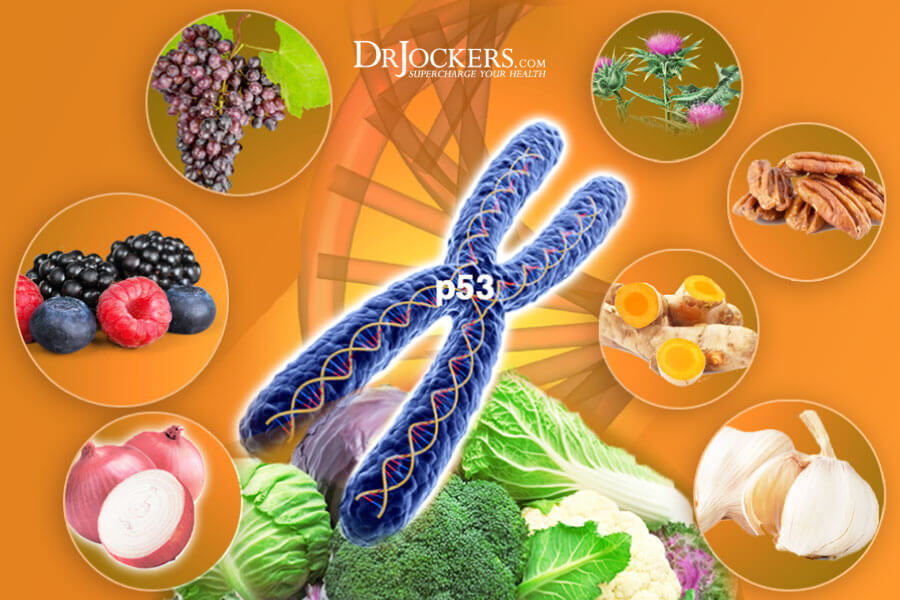
Strengthening Your p53 Genes
The research is clear that the stability of your p53 genes is one of the most important factors in your risk for developing life-threatening cancers. Although genetically inherited traits play a role in the health of your p53 genes, the most important factors are of an epigenetic nature that includes your exposure to environmental stress, carcinogenic chemicals, and poor lifestyle habits.
Avoiding exposure to environmental toxins and consuming foods rich in positive genetic modifiers are critically important. These are things that for the most part you are in control of! Every day, you choose the foods you consume, and the lifestyle habits you embark upon that you either be contributing to the mutation or the strengthening of your p53 gene activity.
If you want to work with a functional health coach, I recommend this article with tips on how to find a great coach. On my website, we offer long-distance functional health coaching programs. For further support with your health goals, just reach out and our fantastic coaches are here to support your journey.

Inflammation Crushing Ebundle
The Inflammation Crushing Ebundle is designed to help you improve your brain, liver, immune system and discover the healing strategies, foods and recipes to burn fat, reduce inflammation and thrive in life!
As a doctor of natural medicine, I have spent the past 20 years studying the best healing strategies and worked with hundreds of coaching clients, helping them overcome chronic health conditions and optimize their overall health.
In our Inflammation Crushing Ebundle, I have put together my very best strategies to reduce inflammation and optimize your healing potential. Take a look at what you will get inside these valuable guides below!
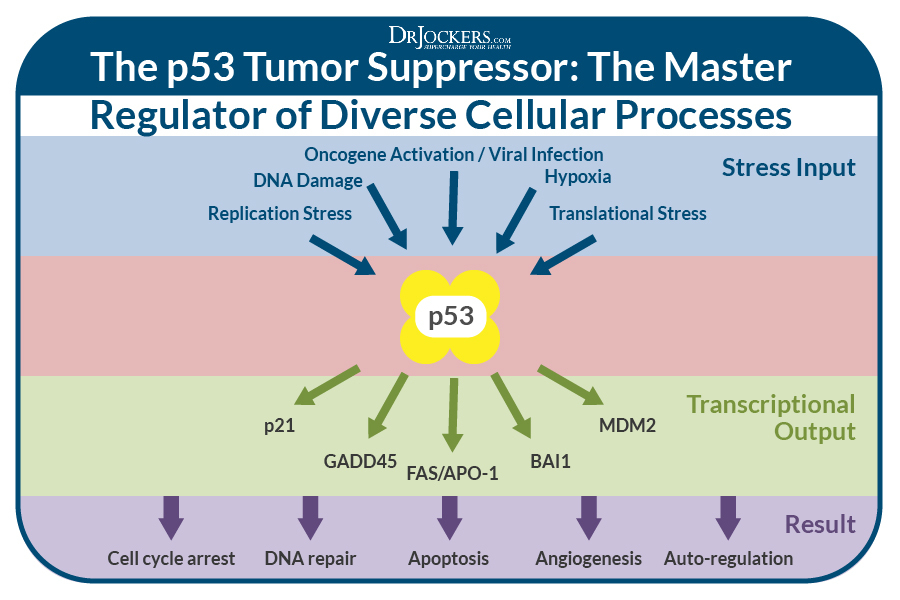
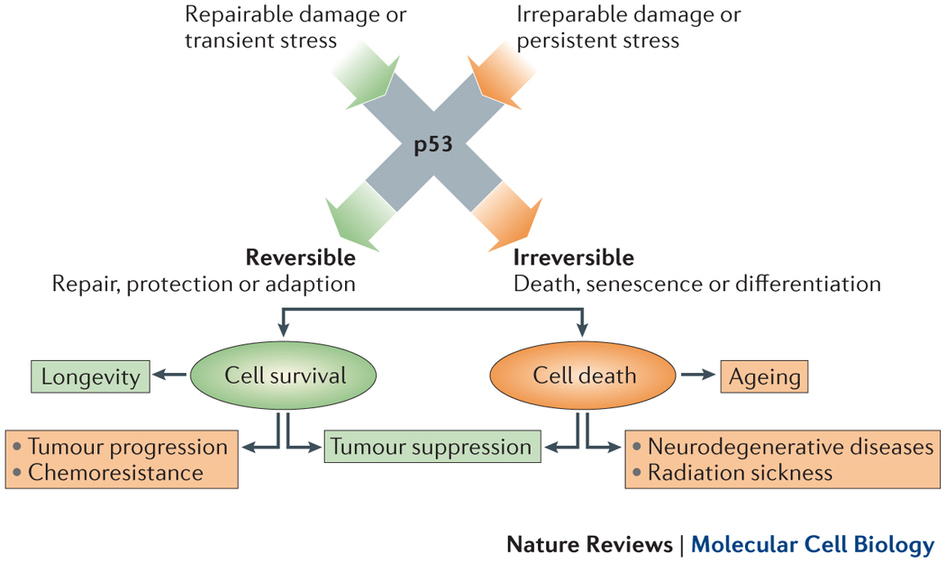
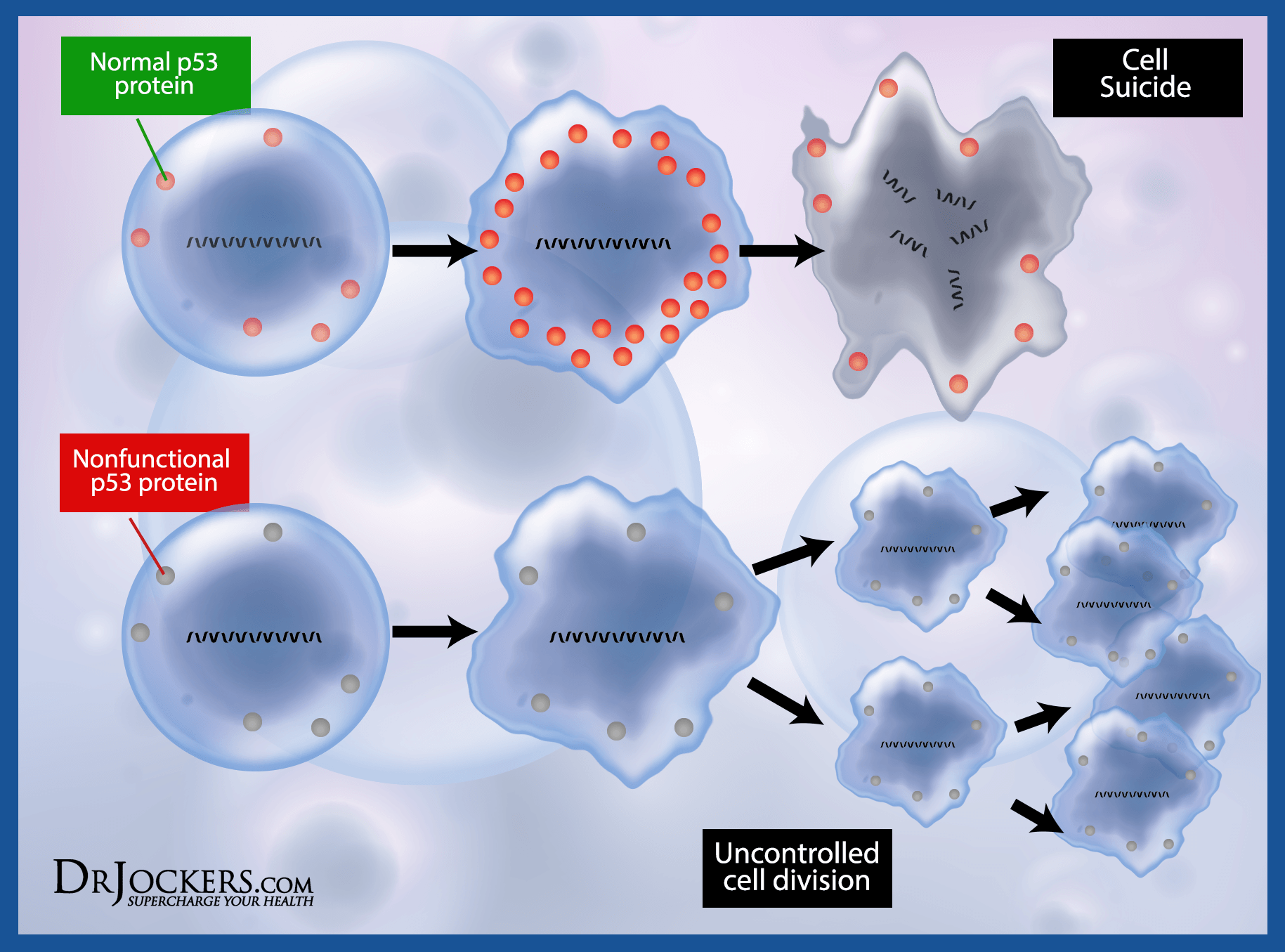
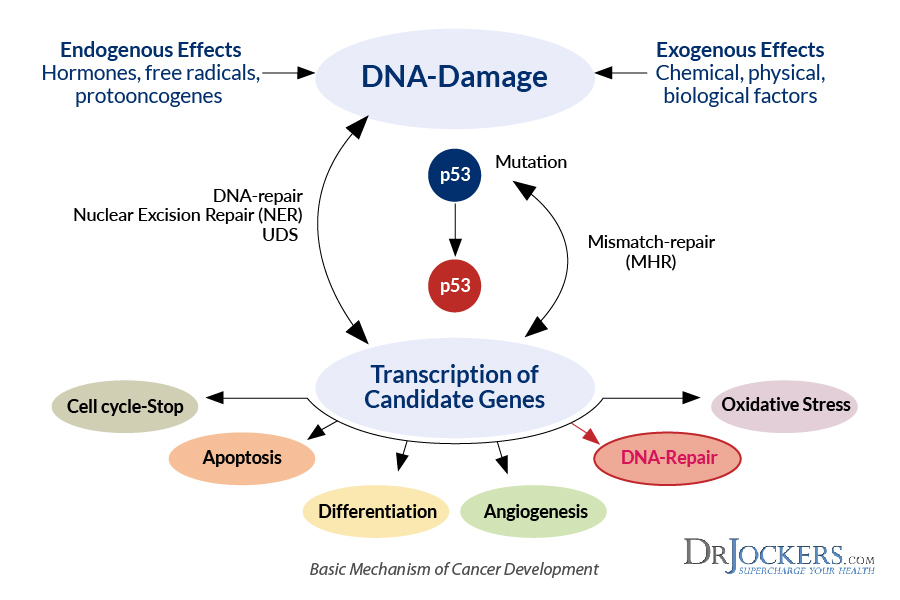




Dealing with the conundrum of getting enough calories to maintain my already lean body while following a plant based diet and doing intermittent fasting.
No problem doing 18:6 intermittent routine . To eat enough plant based food to maintain weight I cant get into ketosis which I greatly desire to fight lung cancer. Afraid of adding animal based foods based on my studying of how methionine (meat,fish,poultry,eggs and dairy) feeds cancer.
Any comments would really be appreciated.
Sorry to hear this! Here is a helpful article: https://drjockers.com/plant-based-ketogenic-diet/